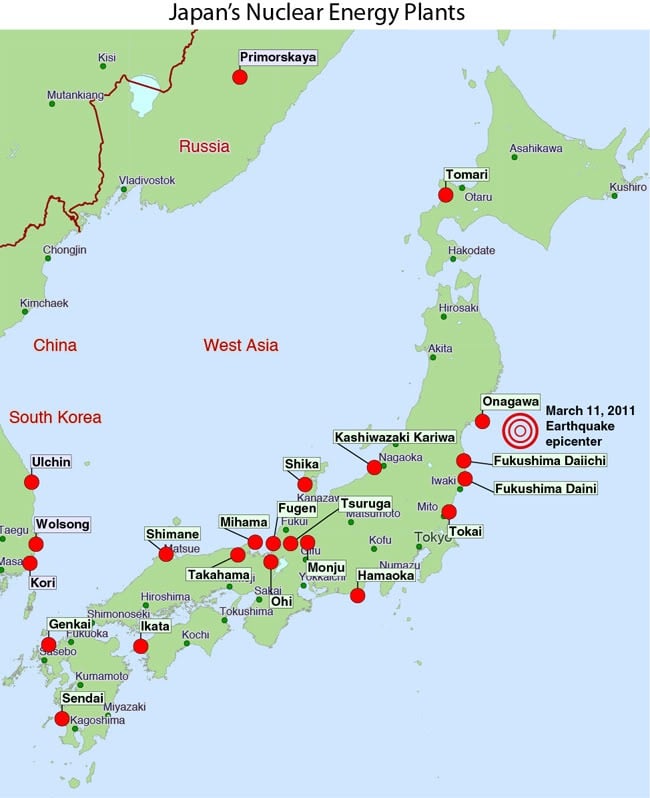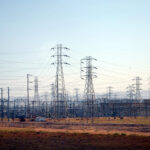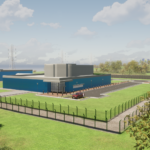Onagawa: The Japanese nuclear power plant that didn’t melt down on 3/11
By Airi Ryu, Najmedin Meshkati | March 10, 2014

“The earthquake and tsunami of March 11, 2011, were natural disasters of a magnitude that shocked the entire world. Although triggered by these cataclysmic events, the subsequent accident at the Fukushima Daiichi Nuclear Power Plant cannot be regarded as a natural disaster. It was a profoundly manmade disaster—that could and should have been foreseen and prevented.”
—Kiyoshi Kurokawa, “Message from the Chairman,” The Official Report of The Fukushima Nuclear Accident Independent Investigation Commission
Three years ago, the biggest recorded earthquake in Japanese history hit Tohoku prefecture, leaving more than 20,000 people dead or missing. On the heels of the destructive magnitude 9.0 earthquake came a tsunami that reached a run-up height of 30 meters in some areas, sweeping entire towns away in seconds. Within the affected area were three nuclear power plants: the Fukushima Daiichi and Daini nuclear power plants operated by the Tokyo Electric Power Company (Tepco), and the Onagawa Nuclear Power Station operated by the Tohoku Electric Power Company. While the three power stations shared similar disaster conditions, nuclear reactor types, dates of operation, and an identical regulatory regime, their fates were very different. The Fukushima Daiichi plant experienced fatal meltdowns and radiation releases. Fukushima Daini was damaged by the earthquake and tsunami, but the heroic efforts and improvisations of its operators resulted in the cold shutdown of all four operating reactors. Onagawa managed to remain generally intact, despite its proximity to the epicenter of the enormous earthquake.
Everyone knows the name Fukushima, but few people, even in Japan, are familiar with the Onagawa power station. Fewer still know how Onagawa managed to avoid disaster. According to a report by the International Atomic Energy Agency mission that visited Onagawa and evaluated its performance, “the plant experienced very high levels of ground motion—the strongest shaking that any nuclear plant has ever experienced from an earthquake,” but it “shut down safely” and was “remarkably undamaged.”
Most people believe that Fukushima Daiichi’s meltdowns were predominantly due to the earthquake and tsunami. The survival of Onagawa, however, suggests otherwise. Onagawa was only 123 kilometers away from the epicenter—60 kilometers closer than Fukushima Daiichi—and the difference in seismic intensity at the two plants was negligible. Furthermore, the tsunami was bigger at Onagawa, reaching a height of 14.3 meters, compared with 13.1 meters at Fukushima Daiichi. The difference in outcomes at the two plants reveals the root cause of Fukushima Daiichi’s failures: the utility’s corporate “safety culture.”
Higher ground. While the Fukushima Daiichi and Onagawa plants are similar in many ways, the most obvious difference is that Tohoku Electric constructed Onagawa’s reactor buildings at a higher elevation than Tepco’s Fukushima reactor buildings. Before beginning construction, Tohoku Electric conducted surveys and simulations aimed at predicting tsunami levels. The initial predictions showed that tsunamis in the region historically had an average height of about 3 meters. Based on that, the company constructed its plant at 14.7 meters above sea level, almost five times that height. As more research was done, the estimated tsunami levels climbed higher, and Tohoku Electric conducted periodic checkups based on the new estimates.
Tepco, on the other hand, to make it easier to transport equipment and to save construction costs, in 1967 removed 25 meters from the 35-meter natural seawall of the Daiichi plant site and built the reactor buildings at a much lower elevation of 10 meters. According to the National Diet of Japan’s Fukushima Nuclear Accident Independent Investigation Commission (NAIIC), the initial construction was based on existing seismological information, but later research showed that tsunami levels had been underestimated. While Tohoku Electric learned from past earthquakes and tsunamis—including one in Chile on February 28, 2010—and continuously improved its countermeasures, Tepco overlooked these warnings. According to the NAIIC report, Tepco “resorted to delaying tactics, such as presenting alternative scientific studies and lobbying.”
Tepco’s tsunami risk characterization and assessment was, in the judgment of one the world’s renowned tsunami experts, Costas Synolakis, director of the Tsunami Research Center at the University of Southern California, a “cascade of stupid errors that led to the disaster.”
Emergency response. Tohoku Electric also took a different approach to emergency response—one that was more organized, collaborative, and controlled than Tepco’s. Tohoku Electric established an emergency response center at the Onagawa plant, as well as at company headquarters, immediately after the earthquake. Throughout the disaster, headquarters supported the plant operators minute by minute. Supervisors and chief engineers were dispatched to the main control rooms of the damaged reactors to make decisions, and information was sent in a timely manner to all levels of the response team.
Why did the Tohoku Electric team remain more poised and unified than their counterparts at Tepco? According to the Nippon Telegraph and Telephone Facilities Research Institute, Yanosuke Hirai, vice president of Tohoku Electric from 1960 to 1975—a time period that preceded the 1980 groundbreaking at Onagawa—was adamant about safety protocols and became a member of the Coastal Institution Research Association in 1963 because of his concern about the importance of protecting against natural disasters. With a senior employee in upper management advocating forcefully for safety, a strong safety culture formed within the company. Representatives of Tohoku Electric participated in seminars and panel discussions about earthquake and tsunami disaster prevention held by the Japan Nuclear Energy Safety Organization. The company implemented strict protocols for disaster response, and all workers were familiar with the steps to be taken when a tsunami was approaching.
These initiatives were not part of Tepco’s culture. The company had a mindset that its domination in the electricity industry was an indication of flawlessness. After the disaster, Hasuike Tooru, the former president of Tepco, described how management decided to lengthen the expected lifetime of power plants, even if there were severe safety consequences.
Safety culture. Government investigations of the Fukushima accident, as well as a statement by US Nuclear Regulatory Commission (NRC) chairwoman Allison MacFarlane, have explicitly acknowledged the vital role of safety culture, which the NRC has defined as “the core values and behaviors resulting from a collective commitment by leaders and individuals to emphasize safety over competing goals to ensure protection of people and the environment.”
The NAIIC report described the Fukushima accident as “made in Japan,” because Japan’s nuclear industry failed to absorb the lessons learned from Three Mile Island and Chernobyl. In the words of NAIIC chairman Kiyoshi Kurokawa, “It was this mindset that led to the disaster.” Safety culture has also been implicated as a primary root cause of the Chernobyl accident.
The Fukushima Daiichi Nuclear Power Station’s meltdowns were not due to the natural disaster, but rather to a series of decisions by Tepco not to be proactive with safety, dating back to when the reactors were being constructed. With most other factors being similar, it was Tokohu Electric’s overall organizational practices and safety culture that saved the day for Onagawa. If safety and disaster response had been properly recognized, addressed, and implemented at Fukushima Daiichi—as they were within Tohoku Electric’s corporate safety culture—perhaps the disastrous meltdowns would have been prevented.
Editor's note: This article is adapted from a research paper based on material available in the public domain in Japan and the United States; the full version of the paper can be found here.
Together, we make the world safer.
The Bulletin elevates expert voices above the noise. But as an independent nonprofit organization, our operations depend on the support of readers like you. Help us continue to deliver quality journalism that holds leaders accountable. Your support of our work at any level is important. In return, we promise our coverage will be understandable, influential, vigilant, solution-oriented, and fair-minded. Together we can make a difference.
Topics: Analysis, Nuclear Energy, Technology and Security
















Daiichi failed for one reason and one reason only: its backup system failed. Had Onagawa’s backup systems failed as well, it too would have been affected. Had the Fukushima backup systems not been co-located with the generating system, Fukushima wouldn’t have suffered the loss it had.
Any situation that would have caused the backup system to be needed, would most likely have caused the backup system itself to fail — which it did when it was needed the most.
You missed this: “Tepco, on the other hand, to make it easier to transport equipment and to save construction costs, in 1967 removed 25 meters from the 35-meter natural seawall of the Daiichi plant site and built the reactor buildings at a much lower elevation of 10 meters.”